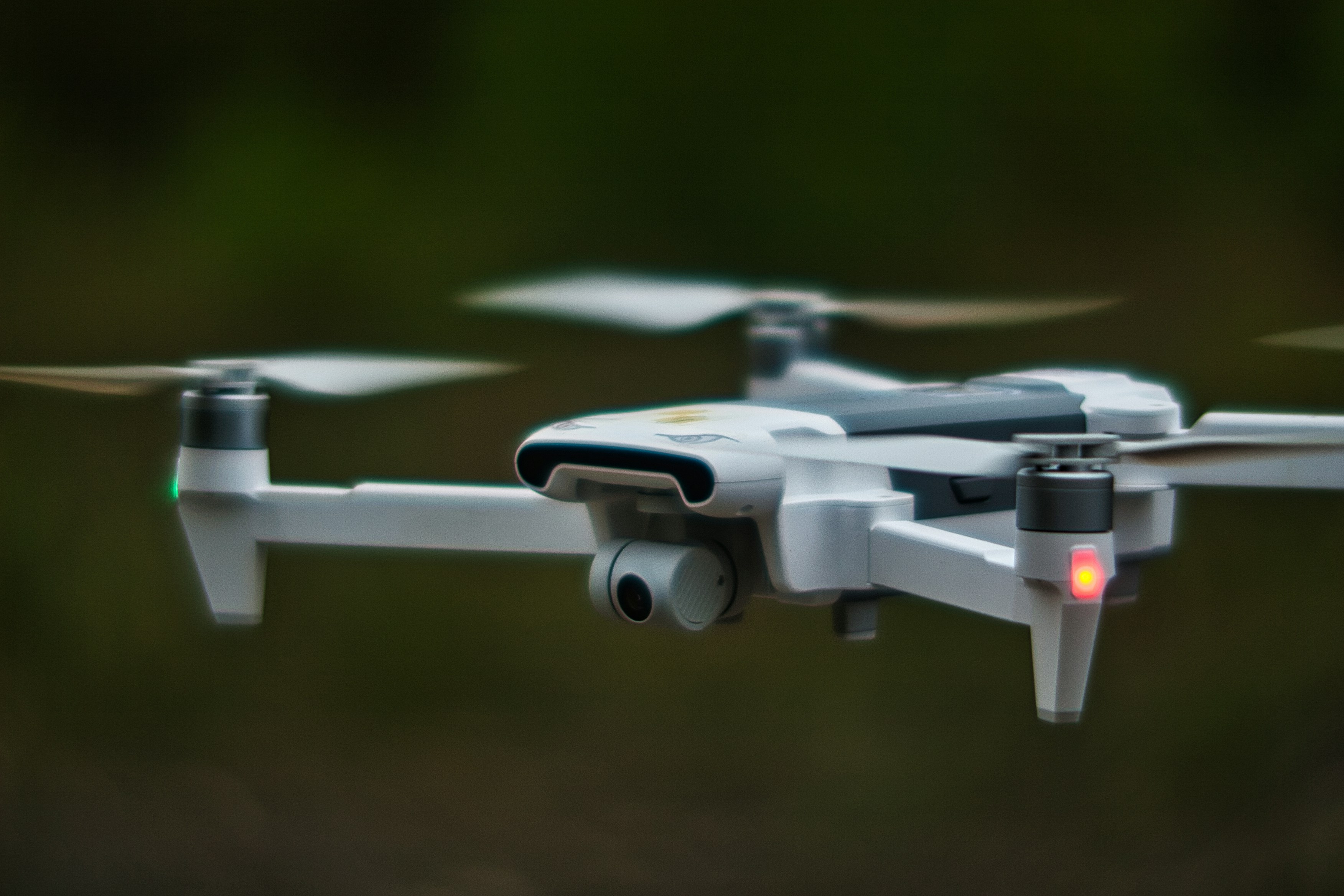
Top UK UAV Labs and Institutes: Where Innovation Takes Flight
Unmanned Aerial Vehicles (UAVs)—often referred to as drones—have expanded well beyond their military origins to reshape industries such as logistics, agriculture, cinematography, disaster relief, and environmental monitoring. As UAV technology becomes smaller, smarter, and more affordable, the need for skilled professionals has soared. In the United Kingdom, a thriving research ecosystem and forward-looking policy framework have bolstered cutting-edge drone technologies—from core hardware and flight software to advanced AI-driven autonomy and beyond.
If you’re seeking a career in UAV design, manufacturing, operation, or related services, the UK is home to pioneering research labs, academic institutes, and innovative start-ups that push the boundaries of flight. In this in-depth guide—created for UAVJobs.co.uk—we’ll spotlight leading UAV labs and institutes across the UK, explore how they’re influencing real-world drone applications, and highlight the varied career pathways open to both newcomers and experienced professionals.
1. The UK UAV Landscape: A Quick Overview
1.1 Early Adoption and Evolving Opportunities
Historically, UAV technology progressed within defence circles, but over the past decade, civilian uses have exploded. The UK is well-positioned to leverage UAVs, given its strong aerospace heritage, robust regulatory frameworks, and advanced research in fields like robotics, AI, and data analytics.
1.2 Civil Aviation Authority (CAA) and Regulation
Drone Code: The UK’s primary set of guidelines for hobbyist and commercial drone operations. It covers flying altitude limits, distance from people/property, and restricted flight zones.
Permission for Commercial Operations (PfCO): Superseded by the more recent Operational Authorisation under the UK UAS Implementing Regulation, ensuring that commercial drone pilots operate safely and responsibly.
Innovation Sandboxes: The CAA has demonstrated willingness to work with drone technology companies, establishing test corridors and trial programmes (e.g., BVLOS—Beyond Visual Line of Sight—pilots) to encourage safe growth of UAV services.
1.3 Vibrant Industry Clusters
Defence and Aerospace: Companies like BAE Systems and Leonardo lead advanced UAV R&D for defence applications.
Commercial Drone Start-ups: Scattered around tech hubs in London, Bristol, Cambridge, and Manchester, these ventures focus on logistics, inspection, and data capture use cases.
Academic–Industry Partnerships: Through Innovate UK grants and catapult centres, universities and private firms collaborate on next-generation UAV hardware, autonomy, and swarming technologies.
From micro-drones for indoor inspection to large fixed-wing craft for cargo delivery, the UK’s UAV scene exemplifies a broad range of platforms and missions—making it a prime arena for skilled professionals seeking diverse career options.
2. Cranfield University – Aerospace and UAV Innovation
2.1 A Renowned Aerospace Institution
Cranfield University stands out as a top-tier hub for aerospace research, with its own airport and a reputation for bridging academic theory and real-world practice. Its National Flying Laboratory Centre (NFLC) and close ties to industry giants (Airbus, Rolls-Royce, etc.) also extend into UAV R&D.
2.2 UAV-Related Centres at Cranfield
Aerospace Integration Research Centre (AIRC): A joint venture with Airbus and Rolls-Royce, investigating advanced air traffic management, autonomous systems, and new flight concepts—drones being a key area.
Drone Technologies Lab: Focuses on designing UAV platforms for surveying, agriculture, cargo, and environmental monitoring, often developing novel control algorithms and sensor payloads.
Digital Aviation Research and Technology Centre (DARTeC): Explores connected aviation, including how drones can integrate into managed airspace.
2.3 Careers and Collaborations
Academic Roles: MSc and PhD programmes in aerospace engineering, autonomy, and UAV design.
Partnerships and Sponsorship: Many research projects link to big aeronautical firms, creating straightforward paths from academia to industry R&D.
Industry Short Courses: Cranfield’s continuing professional development (CPD) offerings allow established engineers to upskill in drone operations, data analytics, and certification.
For those seeking hands-on UAV aeronautics within a dynamic flight environment, Cranfield’s specialisation in aviation technology makes it a prime destination.
3. University of Bristol – Robotics and UAV Excellence
3.1 Blending Robotics and Aerospace
Bristol’s Faculty of Engineering and the Bristol Robotics Laboratory (BRL)—a joint venture between the University of Bristol and the University of the West of England—deliver cutting-edge robotics solutions. While BRL is well-known for ground and underwater robotics, its UAV segment is equally formidable.
3.2 UAV-Focused Research Areas
Autonomous Navigation: Developing advanced sensor fusion, SLAM (Simultaneous Localisation and Mapping), and machine learning approaches for UAV swarms or individually autonomous drones.
Bio-Inspired Drones: Investigating flexible wings, perching capabilities, or flight stability based on nature’s flyers.
Human–Drone Interaction: Exploring how drone operators and onlookers can safely and effectively interact with UAVs, vital for public acceptance in urban spaces.
3.3 Bristol’s Tech Scene and Opportunities
Start-up Culture: Bristol’s entrepreneurial vibe fosters drone-based start-ups tackling wind turbine inspection, marine surveys, or city deliveries.
Collaborations with Aerospace Giants: Companies like Rolls-Royce, Boeing, and Airbus maintain engineering facilities or partnerships in the region.
Academic Pathways: Master’s, PhD, and postdoc roles embedded within multi-disciplinary robotics teams, bridging mechanical design, software, and AI.
If you want to merge robotics fundamentals with practical UAV applications, Bristol’s synergy of advanced research, corporate involvement, and tech-savvy culture is a compelling environment.
4. University of Southampton – Pioneers in Drone Design
4.1 Aviation Heritage and Testing Facilities
Southampton has a rich maritime and aviation legacy—its Aeronautics and Astronautics Department stands at the forefront of unmanned systems research. The university hosts wind tunnels, composite manufacturing labs, and flight simulators that support drone design validation.
4.2 UAV Labs at Southampton
UAV Research Group: Specialises in computational fluid dynamics (CFD), flight dynamics, and novel UAV airframes. Their 3D-printed drone projects garnered headlines for pushing additive manufacturing in aviation.
Marine and Maritime Institute: Investigates drone usage in marine environments—for environmental monitoring, maritime rescue, and anti-piracy operations.
4.3 Career Prospects
Design and Development: Engage in aerodynamic refinement, structural design, or embedded systems for UAVs.
Materials and Manufacturing: Southampton’s interest in composites and additive manufacturing opens roles focusing on lighter, more efficient drone bodies.
Research Partnerships: Collaborations with the National Oceanography Centre, NASA, and major defence contractors yield real-world experience in extreme environment UAVs (e.g., Arctic or maritime).
For specialists aiming to blend aerodynamic excellence with next-level manufacturing processes, Southampton’s UAV ecosystem provides a fertile training ground and professional springboard.
5. Loughborough University – Advanced Materials and UAV Propulsion
5.1 Engineering Pedigree
Loughborough consistently ranks for engineering across multiple domains. Its Mechanical, Electrical, and Materials engineering departments contribute to UAV innovations, particularly in propulsion systems, battery research, and structural design.
5.2 UAV-Related Centres
Aeronautical and Automotive Engineering: Perfecting propulsion, aerodynamic optimisation, and flight control for small to mid-sized drones.
Materials Characterisation: Investigating lightweight composites, metal foams, and shape-memory alloys that could revolutionise UAV durability and energy efficiency.
Additive Manufacturing Research Group: Exploring 3D printing techniques for UAV frames, engine components, and integrated electronics.
5.3 Industry Ties
Collaborations: Loughborough partners with motorsport and automotive firms—some of which adapt high-performance engineering and testing protocols to UAV technology.
Career Pathways: Roles for design engineers, aerodynamicists, and materials scientists bridging labs and commercial drone ventures.
Testing Facilities: Access to advanced wind tunnels, battery labs, and mechatronic rigs ensures robust prototyping and real-world environment simulations.
If you’re captivated by drone propulsion challenges, advanced materials for improved flight endurance, or synergy with automotive engineering, Loughborough’s domain expertise stands unmatched in these fields.
6. University of Leeds and University of Sheffield – Northern Robotics and UAV Innovations
6.1 Northern UAV Ecosystem
Beyond the southern clusters, the University of Leeds and University of Sheffield anchor UAV R&D in the North of England, focusing on fields like healthcare delivery, inspection, and logistics.
6.2 Key Projects
Leeds School of Computing and Robotics: Investigates multi-drone coordination, object tracking, and advanced computer vision for autonomous flight in complex environments.
Sheffield Advanced Manufacturing Research Centre (AMRC): While widely known for manufacturing, the AMRC also explores drone usage for non-destructive testing, factory-floor inventory checks, and supply chain automation.
6.3 Start-ups and Industry
Logistics & Inspection: Northern energy companies and infrastructure operators increasingly adopt UAVs for pipeline or power line checks—fostering direct industry links with local universities.
Career Tracks: Roles in software development (e.g., real-time path planning), structural testing, or data analytics for UAV-generated inspection data.
The synergy between advanced manufacturing, robotics, and drone solutions in the North encourages collaborative R&D and rapid tech adoption—ideal for professionals craving a dynamic engineering environment.
7. National Centres and UAV-Related Government Initiatives
7.1 The Future Flight Challenge
Launched by Innovate UK, the Future Flight Challenge funds multiple UAV and eVTOL (electric vertical take-off and landing) demonstrations, with an eye on shaping integrated airspace where cargo drones, passenger drones, and conventional aircraft coexist.
7.2 Catapult Centres
Connected Places Catapult: Investigates drone traffic management (UTM) systems for urban air mobility, plus city-centric drone deliveries and mapping.
Offshore Renewable Energy Catapult: Focuses on UAV-based inspection for offshore wind farms and maritime infrastructure.
7.3 Defence and Security
DSTL (Defence Science and Technology Laboratory): Sponsors advanced UAV tech for reconnaissance, threat detection, and stealth operations.
Border Force & Policing: Increasingly use drones for surveillance and public safety applications, occasionally collaborating with research labs for advanced sensor and communication solutions.
Professionals in these government-linked labs or catapult centres often engage in multi-partner projects, bridging academic breakthroughs with commercial or security contexts.
8. Industry Players and UAV Applications
8.1 Commercial Drone Operators
Companies like Sky-Futures (oil and gas inspection), Terra Drone Europe, and Cyberhawk (infrastructure inspection) dominate UK’s UAV service markets—recruiting drone pilots, GIS analysts, and data scientists.
8.2 Drone Delivery and Logistics
Amazon Prime Air: Has tested UAV deliveries in Cambridgeshire, employing software, mechanical, and flight engineers.
Royal Mail Trials: Trials of island-to-mainland deliveries; roles revolve around flight operations, regulatory compliance, and route planning.
8.3 Imaging and Mapping Specialists
GeoSim, Bluesky, etc.: Provide aerial surveys for urban planning, environmental monitoring, or real estate. They need LiDAR processing experts, photogrammetry pros, and remote sensing engineers.
8.4 Agriculture and Environmental Monitoring
Drones are essential for crop scouting, livestock tracking, reforestation efforts, or measuring biodiversity. Start-ups in this domain hire agronomists, sensor integration specialists, and data analytics professionals.
9. Career Paths in the UAV Domain
9.1 Engineering and R&D Roles
Aerospace / Aeronautical Engineer
Design and optimise UAV airframes for stability, efficiency, or high payload capacity.
Skills: CFD, structural analysis, materials selection.
Robotics / Control Systems Engineer
Develop flight control algorithms, sensor fusion techniques, and autopilot software for stable, autonomous flight.
Skills: C/C++/Python, embedded systems, real-time OS, advanced control theory.
Machine Learning and Computer Vision
Build object detection, mapping, or path-planning algorithms so drones can navigate complex terrains or identify targets.
Skills: Deep learning frameworks (TensorFlow, PyTorch), ROS (Robot Operating System), camera calibrations.
Electrical / Electronics Engineer
Design power distribution boards, battery systems, motor drivers, and communications hardware.
Skills: PCB layout, battery chemistry, embedded microcontroller design, wireless networking.
9.2 Pilot and Operations Roles
Commercial UAV Pilot
Conduct flights for inspection, photography, mapping, or deliveries.
Skills: CAA licensing (GVC or STS certificate), operational risk assessments, flight log management, drone maintenance.
Flight Operations Manager
Oversee multiple UAV missions, coordinate logistics, manage pilot schedules, ensure compliance with local airspace regulations.
Skills: Project management, knowledge of UAV regulation, risk mitigation, communication.
Safety and Compliance Specialist
Ensure UAV activities align with CAA guidelines or relevant insurance/legal frameworks.
Skills: Regulatory understanding, documentation best practices, hazard identification.
9.3 Data Analytics and Application Roles
Geospatial Analyst
Process aerial imagery or LiDAR data for surveying, mapping, or environmental monitoring.
Skills: GIS software (ArcGIS, QGIS), photogrammetry, data visualisation.
Software Developer (Back-end)
Create cloud-based platforms for real-time UAV telemetry, route planning, or data analytics dashboards.
Skills: Java/Python, AWS/Azure, databases, streaming architectures.
Product Manager
Define UAV solutions for specific industries (e.g., real estate, agriculture), balancing technical feasibility with commercial objectives.
Skills: Market research, stakeholder collaboration, scoping product features, budgeting.
9.4 Entrepreneurship and Start-up Ventures
If you’re an innovator with an original UAV concept—be it a new multi-rotor design, a payload sensor, or a drone service model—the UK’s seed funding environment and numerous incubators can help your project take flight.
10. Essential Skills for Success in the UAV Sector
Multidisciplinary Knowledge
UAVs combine aerodynamics, electronics, software, and user-centric design. A systems-level understanding ensures robust, integrated solutions.
Regulatory Acumen
Familiarity with CAA rules, flight restrictions, or special permits like BVLOS operations is essential to deploying drones commercially.
Hands-On Prototyping
Real-world flight tests reveal mechanical vibrations, weather impacts, or sensor noise that pure simulations can miss. Experience with flight test iteration is invaluable.
Data Handling
As drones generate huge volumes of sensor data, being adept at big data management, machine learning, or remote sensing techniques sets you apart.
Collaboration and Communication
UAV teams typically span hardware specialists, software developers, regulatory experts, and end-users. Clear communication fosters synergy and addresses issues early.
11. Conferences, Events, and Networking
11.1 Key UK UAV Events
Commercial UAV Expo (European editions often feature UK-based exhibitors and sessions).
DroneX Tradeshow & Conference: Held in London, highlighting UAV innovations across logistics, security, and infrastructure.
UK Drone and Technology Expos: Local expos for consumer, professional, and industrial drones, featuring hardware demos, hackathons, and pitch sessions.
11.2 Professional Bodies and Associations
ARPAS-UK (Association of Remotely Piloted Aircraft Systems)
Represents UAV operators, manufacturers, and service providers, hosting workshops and championing best practices.
Royal Aeronautical Society (RAeS)
Has special interest groups in unmanned aviation, organising lectures, panel events, and awarding fellowships.
11.3 Local Meetups and Hackathons
Cities like London, Bristol, and Manchester frequently host drone hackathons or robotics clubs. Participating is a great way to learn from community projects, share your own builds, and find potential collaborators or employers.
12. Future Trends in UAV Technology
12.1 BVLOS and Urban Air Mobility
Beyond Visual Line of Sight (BVLOS) flights enable large-scale deliveries and extended inspections. Urban air mobility concepts (eVTOL air taxis) also represent the frontier of drone-based transportation in city environments.
12.2 Drone Swarms and Autonomy
Swarm intelligence fosters more efficient, scalable tasks—like large-area mapping or search-and-rescue—coordinated through AI-based decision-making rather than direct pilot control.
12.3 Counter-UAV Systems
As drones proliferate, the need to detect and mitigate rogue or hostile UAVs grows. Radar, RF detection, and AI-driven solutions present a parallel growth sector in security and defence.
12.4 Advanced Propulsion and Battery Tech
Improving flight endurance remains a top priority. Innovations in Li-ion, hydrogen fuel cells, or solar UAVs promise longer, more flexible missions in commercial and environmental applications.
12.5 Integration into Unified Air Traffic Management (ATM)
The next step is safely integrating drones with manned aircraft in shared airspace. UAV traffic management (UTM) systems are being prototyped to automatically assign flight corridors, avoid collisions, and manage real-time changes (e.g., weather or emergency flights).
Conclusion
The UK’s UAV ecosystem is as dynamic as the technology itself, boasting a broad range of labs, institutes, start-ups, and industry heavyweights pushing the envelope of what drones can achieve. From Cranfield’s aeronautical focus and Bristol’s robotics prowess to Southampton’s structural innovations and the national catapult centres accelerating commercial adoption, the country forms a world-class environment for professional growth in UAV design, operations, and data analytics.
As regulations continue to evolve and BVLOS missions unlock new horizons, drone technology is poised for even greater influence across logistics, emergency response, agritech, entertainment, and more. Career opportunities cater to mechanical engineers perfecting aerodynamic frames, software developers enabling advanced autonomy, geospatial analysts interpreting drone-captured data, and countless other specialisms. Against this vibrant backdrop, knowledge of UK regulations, strong multi-disciplinary grounding, and a willingness to engage with new sensor technologies and flight platforms can help you thrive in one of the 21st century’s most exciting tech sectors.
Ready to take the next step? Browse UAVJobs.co.uk to find current vacancies, connect with drone-focused employers, and keep track of industry trends. Join the teams shaping unmanned aviation, forging safer skies, greener logistics, and innovative services for future generations.


